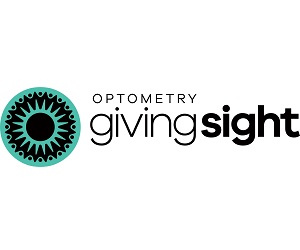
Editor’s Note:
This article is the first in a series to explore the process of buying an optometric practice. Along the way, we will introduce you to various subject matter experts, but we also want to hear from you, based on your own experiences. Whether you are in acquisition mode, exit mode or somewhere in between and have valuable advice to share with Jane and Steven, we’d like to hear form you.
Scroll down to the end of the article to view and add your comments.
Life is all about the milestones. Whether it involves physical or emotional growth, professional or personal endeavors, each of us are defined by the achievements, decisions and experiences that have led us to the present moment. Individual milestones will always vary, but for those of us in the eye care industry, there are a few standard benchmarks we can use to help us track our career progression and personal development throughout our lifetime as specialized health professionals.
Here’s a case study to help us visualize the career path a little better: Jane and Steven Buchan are a married couple and are both licensed optometrists. They graduated together with doctor of optometry (OD) degrees back in 2012, and have spent the last 4 years working as associates for a number of different practices, making a joint gross income of $190,000 per year. They also have a total outstanding debt of $120,000 from student loans which they hope to have paid off completely within the next 5 years.
Both of them have decided that they are ready to take the next step forward in their careers by purchasing an independent eye care practice which they can co-manage as partners. They have no children or other dependents, so it’s the perfect time to take a little professional risk – especially one like this with large potential pay-offs for career advancement and profitability. After several months of scouring through neighbourhoods, ads and websites across the province, Jane and Steven find what they believe is the door to their next chapter. What do they do next? Here are five important pre-purchase activities that they need to devote themselves to before taking the plunge:
Pick Your Experts
Jane and Steven have little to no experience evaluating, purchasing and establishing an eyecare practice from the ground up. It is important for them to find experienced and well-informed professionals who can help them through the process and make sure that all the nitty gritty details are accounted for and incorporated into their business plan and decisions along the way. They will need a lawyer and an accountant, preferably with direct experience in optometric practices. The accountant should be able to help them value the target practice, help forecast current and future expenses, and build a solid yet flexible financing plan that will also help pay for a little peace of mind. The lawyer can similarly help appraise the practice, and offer an additional take on the administrative and legal obligations that come into play when purchasing such an asset. Of course, the final Purchase Agreement, is a legal document that requires a full review. They may also come across a licensed business broker representing prospective sellers. As the Buchans progress further along their pre-purchase checklist, they will look to these allies to help answer some of their toughest questions and decisions moving forward.
Plan for the Business
Jane and Steven’s goal – like every other specialist who decides to establish an independent clinic – is to develop a stable, rewarding and profitable practice. That goal, however, needs to be translated into quantifiable metrics that they will be able to monitor and adjust over the course of the next few years as they improve their business acumen, adapt to suit their clients’ needs, and satisfy their own work-life balance and earning requirements. The business plan will also touch upon many aspects of the remaining four preparatory steps, and it is best used as a detailed game plan that re-calibrates and synchronizes itself with the future successes and failures of your new business.
Do the Math
The biggest chunk of the Buchan business plan should be dedicated to crunching the numbers and figuring out how much they can invest in their business, while still meeting other financial goals and maintaining a suitable quality of life. This is the step that gives them the a clearer yes/no picture on the purchase and it also lets them know how much wiggle room they have to make it better before it has even begun. Comprehensive and accurate financial forecasting will give them much of the direction they need for all the big decisions that are yet to come: What other fees need to be paid for before this transaction can be finalized? What should be paid off first? How much staff can they afford to hire? Should they upgrade the space or the equipment? It’s at this stage that they must ask themselves what price they are willing to pay to get what they want.
Raise the Funds
Once the Buchans have a solid idea of how much capital is needed to set the business up and how much extra they will need at regular intervals to keep it running, the next task will be to go out and find creative ways to raise that money. Many big banks offer special funding and financing options for professionals in the eye care industry, and other funding options can certainly be found through third-party lending agencies and even through the property seller. Additional funding options for equipment will also be explored, and we will tune in as they weigh the pros and cons of leasing versus buying equipment, keeping in mind that many pieces of technology can become significantly outdated and even obsolete in as little as three years.
Acquire the Talent
With many of the fixed business expenses accounted for in the previous stages, Jane and Steven would also need to find good people to assist them in the daily operation of the clinic and work with them as they continue to build this new practice. The biggest consideration for hiring, whether they are accepting applications for new staff, or taking on the existing manpower from the clinic’s previous owner, is the budget that they have set aside during the accounting phase for their human resources needs. This includes the obvious salary, benefits and possible employee discounts, but it should also make considerations for employment laws and tax obligations. In order to get the best possible picture of the legal and financial implications of their staffing needs, they should consult their legal counsel. Stay tuned for future articles as we accompany the Buchans on their insightful journey towards envisioning and building the practice of their dreams.
Here is information about the practice that have Jane and Steven excited. They made a few inquiries and attained a summary Income statement from a broker representing the seller (after signing a non-disclosure agreement). Click to view: Doctor EyeCare Optometry Income Statement
We’d like to hear from you:
- What advice do you have for the Buchans?
- What more information should they ask about?
- Is this a good practice for them to consider?
- What do you recommend they do next ?
Post your advice in the “Leave a Reply” box below.

LYANNE AUGUILAR
Lyanne Aguilar is a Toronto-based writer who specializes in finance and healthcare-related content, both in English and French























